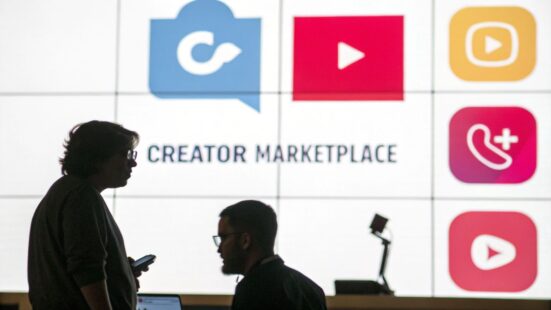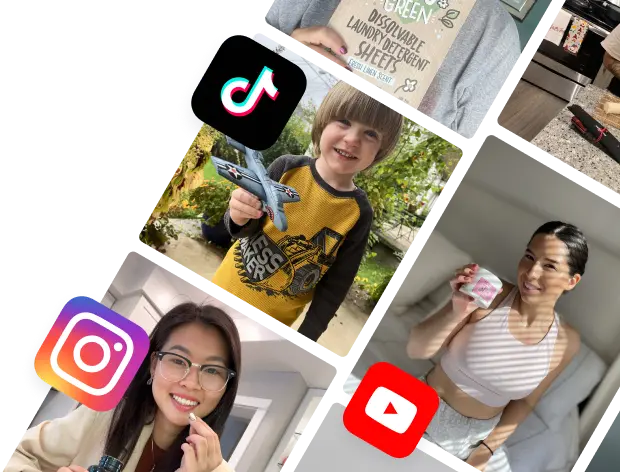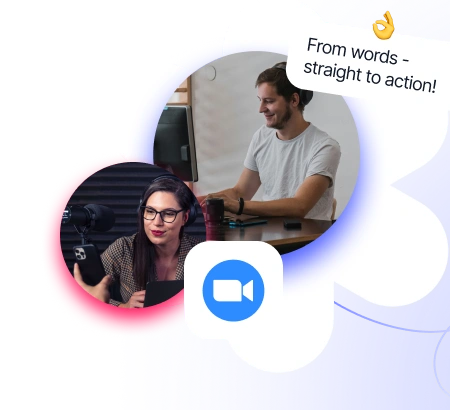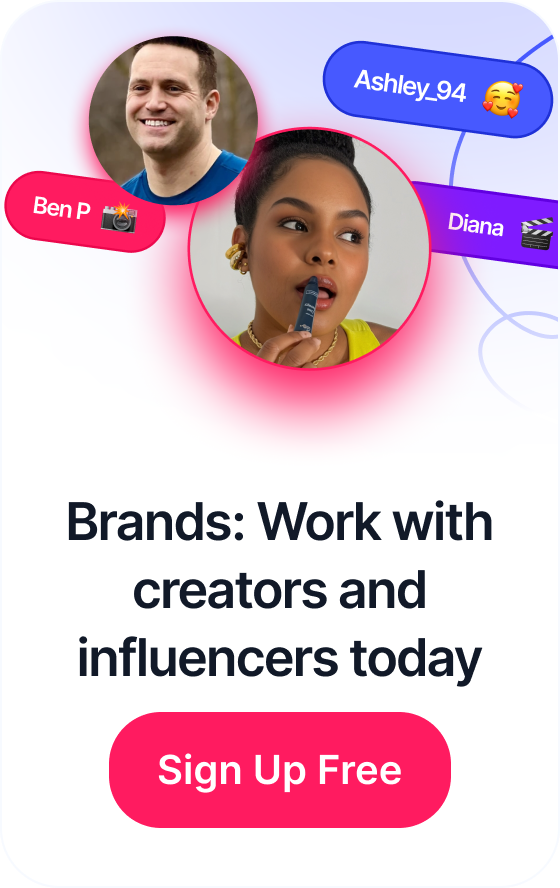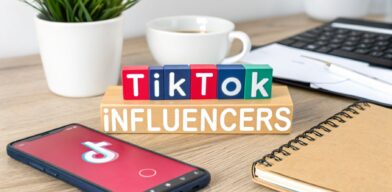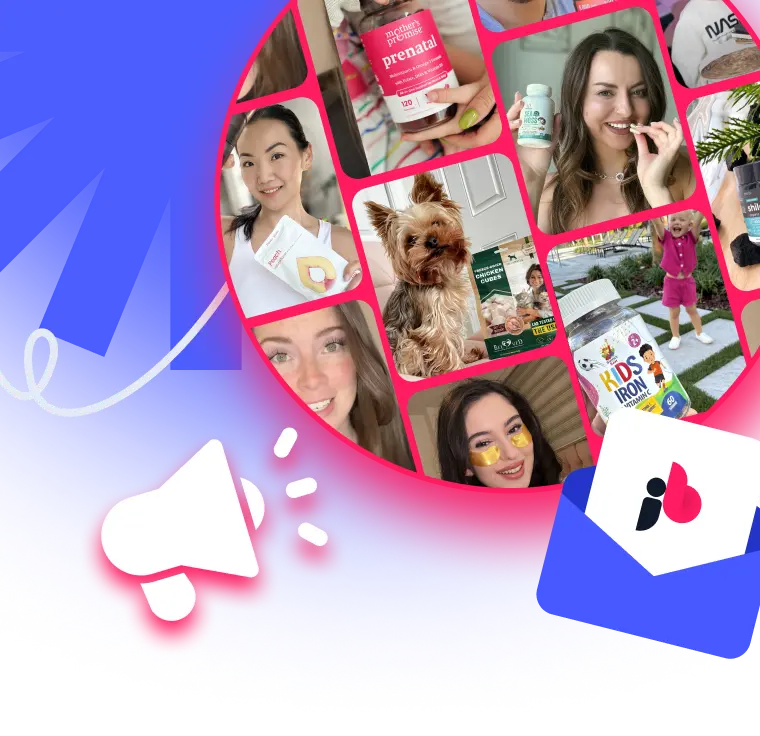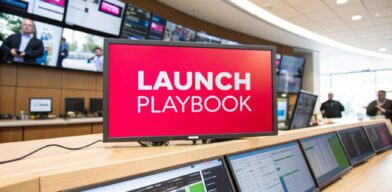 Your New Product Launch Strategy Playbook
Your New Product Launch Strategy Playbook
Think of a creator marketplace as the ultimate matchmaker for brands and creative talent. It’s part talent agency, part project management software, all rolled into one platform built specifically for the booming creator economy.
Table of Contents
What a Creator Marketplace Really Is
Remember the old way of finding creators? It was a grind. You’d spend hours scrolling through social media, sending dozens of cold DMs, haggling over rates one by one, and trying to keep track of it all in a messy spreadsheet. It was slow, clunky, and honestly, a huge headache.
A creator marketplace flips that entire process on its head. It’s an organized, streamlined ecosystem where brands can post collaboration opportunities, and creators can find projects that genuinely fit their style and audience. These platforms are way more than just a list of names; they’re the engine that powers modern brand partnerships from start to finish.
The Modern Bridge Between Brands and Creators
At its heart, a creator marketplace swaps out the chaos of manual outreach for a smart, tech-driven system. For brands, this means getting instant access to a database of vetted creators, which saves a massive amount of time on the discovery phase alone. For creators, it means a reliable flow of potential brand deals and, just as importantly, secure and on-time payments. To really get a sense of their impact, it helps to understand what is a content creator and how these platforms empower their work.
A good marketplace handles a few key things really well:
- Discovery: Brands can zero in on the perfect creator by filtering for niche, audience stats, engagement rates, and more.
- Management: Everything happens in one place—communication, content approvals, and tracking deadlines are all centralized.
- Payments: The platform takes care of all the financial stuff, making sure creators get paid promptly and brands have clean records.
- Analytics: You get a clear view of how your campaigns are performing, with real data on reach, engagement, and ROI.
A creator marketplace isn't just a list of names. It’s a complete operating system for building, managing, and scaling brand-creator relationships in the digital age.
This has become so important because, let's face it, authenticity is what sells today. People trust recommendations from their favorite creators way more than they trust a polished corporate ad. In fact, a recent study found that 70% of consumers say creator opinions are relevant when they're deciding what to buy.
So how do you tap into that trust without spending all your time on outreach? That's where marketplaces come in. They make finding the right voices to tell your story not just possible, but efficient.
To put it into perspective, let's compare the old way with the new way.
Creator Marketplace vs Traditional Outreach
| Feature | Creator Marketplace | Traditional Manual Outreach |
|---|---|---|
| Discovery | Searchable database with filters (niche, audience, etc.) | Manual searching on social media, Google, and hashtags. |
| Vetting | Creators are often pre-vetted with performance data. | Requires extensive manual background checks and analysis. |
| Communication | Centralized messaging system for all collaborations. | Disorganized comms across email, DMs, and texts. |
| Negotiation | Standardized rates or clear bidding process. | Time-consuming back-and-forth for each creator. |
| Payments | Secure, automated, and centralized payment processing. | Manual invoicing, payment tracking, and risk of delays. |
| Efficiency | Launch campaigns with multiple creators in hours or days. | Can take weeks or months to get a single campaign live. |
| Scalability | Easy to scale up campaigns and work with dozens of creators. | Extremely difficult and resource-intensive to scale. |
The difference is pretty stark. One is a system designed for speed and scale, while the other is a relic of a time before the creator economy truly took off. Marketplaces are the essential infrastructure that makes modern, people-driven marketing work.
Exploring the Engine Room of a Creator Marketplace
To really get what a creator marketplace is all about, you have to look under the hood. Think of it like the engine room of a ship—it’s not just one big part, but a whole system of interconnected pieces working in sync to push everything forward. These platforms are way more than just a list of names; they're the operational hubs where brand-creator magic actually happens.
The heart of this engine is AI-powered creator discovery. Trying to find the right creator manually is like searching for a specific grain of sand on a massive beach. It's slow, tedious, and honestly, a bit of a crapshoot. Modern marketplaces solve this with smart algorithms that do all the heavy lifting, saving brands countless hours of scrolling.
This tech sifts through millions of data points—and we're talking way beyond follower counts. It dives deep into audience demographics, engagement rates, content style, past brand deals, and even the tone of audience comments to find the perfect match for a brand's campaign goals.
The Central Hub for Campaign Operations
Once you've found the creators you want to work with, the marketplace shifts gears and becomes your mission control. This is where integrated campaign management tools are an absolute game-changer. Forget about juggling endless email threads, DMs, and messy spreadsheets. Everything is neatly organized on one dashboard.
This streamlined setup usually includes:
- Communication Channels: Direct messaging keeps all conversations in one place so nothing gets lost in the shuffle.
- Content Approval Workflows: Creators submit their content right on the platform. Brands can then give feedback, ask for changes, or hit the approve button—all in one spot.
- Automated Reminders: The system keeps an eye on deadlines for content submission and posting, sending out automatic nudges to keep everyone on track.
- Asset Management: Every approved photo and video is stored in a central library, making it super easy to find and reuse later.
To keep things running smoothly, both creators and brands often rely on the best social media management software to manage their side of things. But having these management features built right into the marketplace ensures every collaboration stays on time and on brief.
This infographic gives a great visual of how a creator marketplace acts as the central hub, creating a seamless loop between brands and creators.
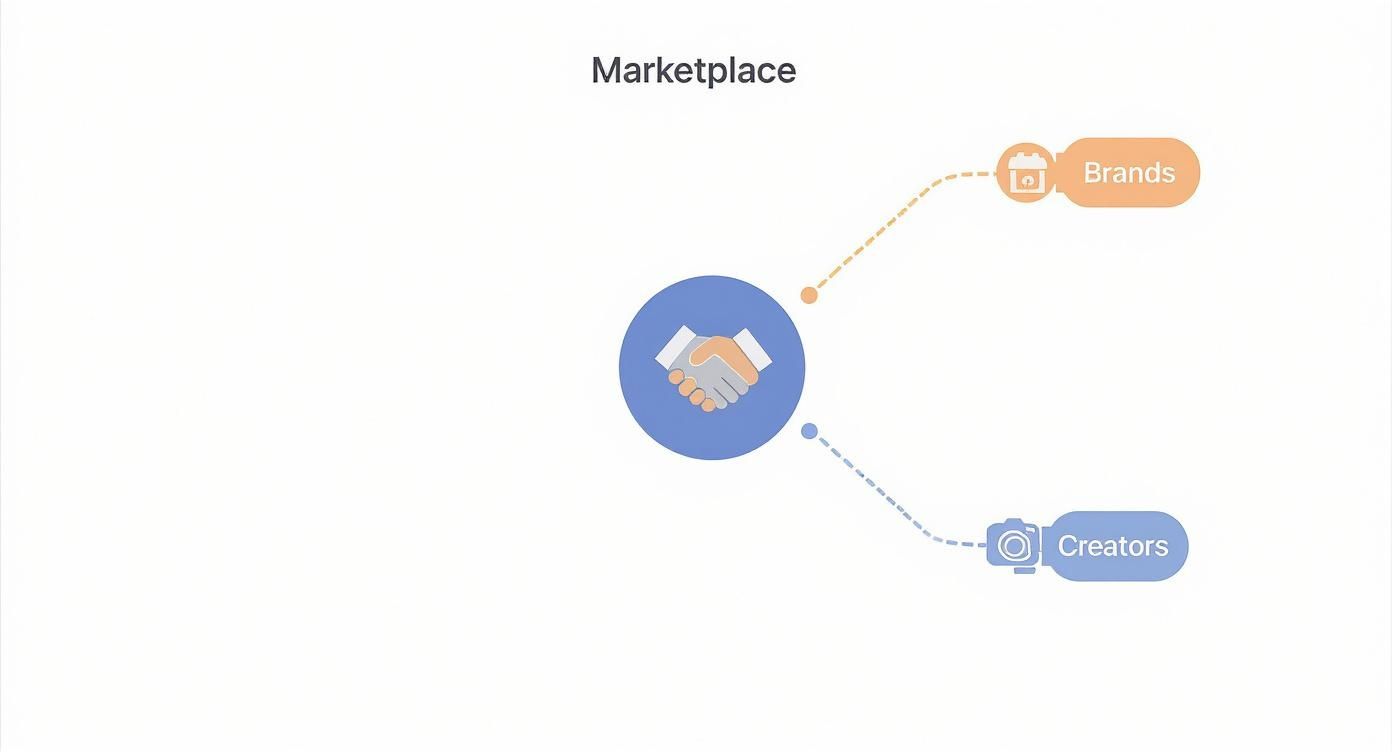
You can see how the platform acts as the essential middleman, simplifying everything from discovery and management to payments for both sides.
Building Trust Through Secure Payments
One of the biggest headaches in traditional creator partnerships? Getting paid. Creators are constantly wondering if they'll be paid on time, and brands need a secure, trackable payment process. A good creator marketplace eliminates this friction with a built-in, secure payment system.
These systems work like a trusted third-party escrow. The brand funds the campaign upfront, and the platform holds the money safely. As soon as the creator delivers the content as agreed and the campaign is live, the funds are released automatically. It’s a simple process that builds a ton of trust and gets rid of financial stress, letting everyone focus on the creative stuff.
Proving Value with Analytics and Reporting
Finally, what good is an engine room without gauges and dials? A robust analytics dashboard is the last critical piece. How do you know if your campaign actually worked? How can you prove your return on investment (ROI)? The marketplace answers these questions by tracking and visualizing all the key performance indicators (KPIs).
A creator marketplace without data is just a contact list. A great one provides the deep analytics needed to not only measure success but also to refine and improve future strategies.
These dashboards offer real-time insights into crucial metrics like impressions, reach, engagement, click-through rates, and even conversions if you’re using trackable links or promo codes. This data is pure gold. It helps you understand which creators and content formats are hitting the mark with your audience, so you can make smarter, data-backed decisions for your next campaign.
By 2025, creator marketplaces have become seriously sophisticated platforms. They are the go-to places where brands and creators connect, collaborate, and get business done using advanced AI. These platforms use algorithm-driven matching based on audience data, which has boosted campaign success rates by about 40% compared to 2023. It’s worth exploring these evolving trends to fully grasp their impact on digital content.
So, What’s in It for Brands and Creators?
A creator marketplace is more than just a digital meeting spot; it's the engine room for modern marketing. It’s designed to create a win-win scenario where both brands and creators don’t just connect, but actually grow together.
Think of it this way: these platforms remove all the usual friction—the endless negotiations, the missed emails, the payment delays—and replace it with a clear, streamlined process. The whole point is to make collaboration easier and more valuable for everyone involved. For brands, this means hitting key business goals faster. For creators, it means turning a passion project into a real, sustainable career.
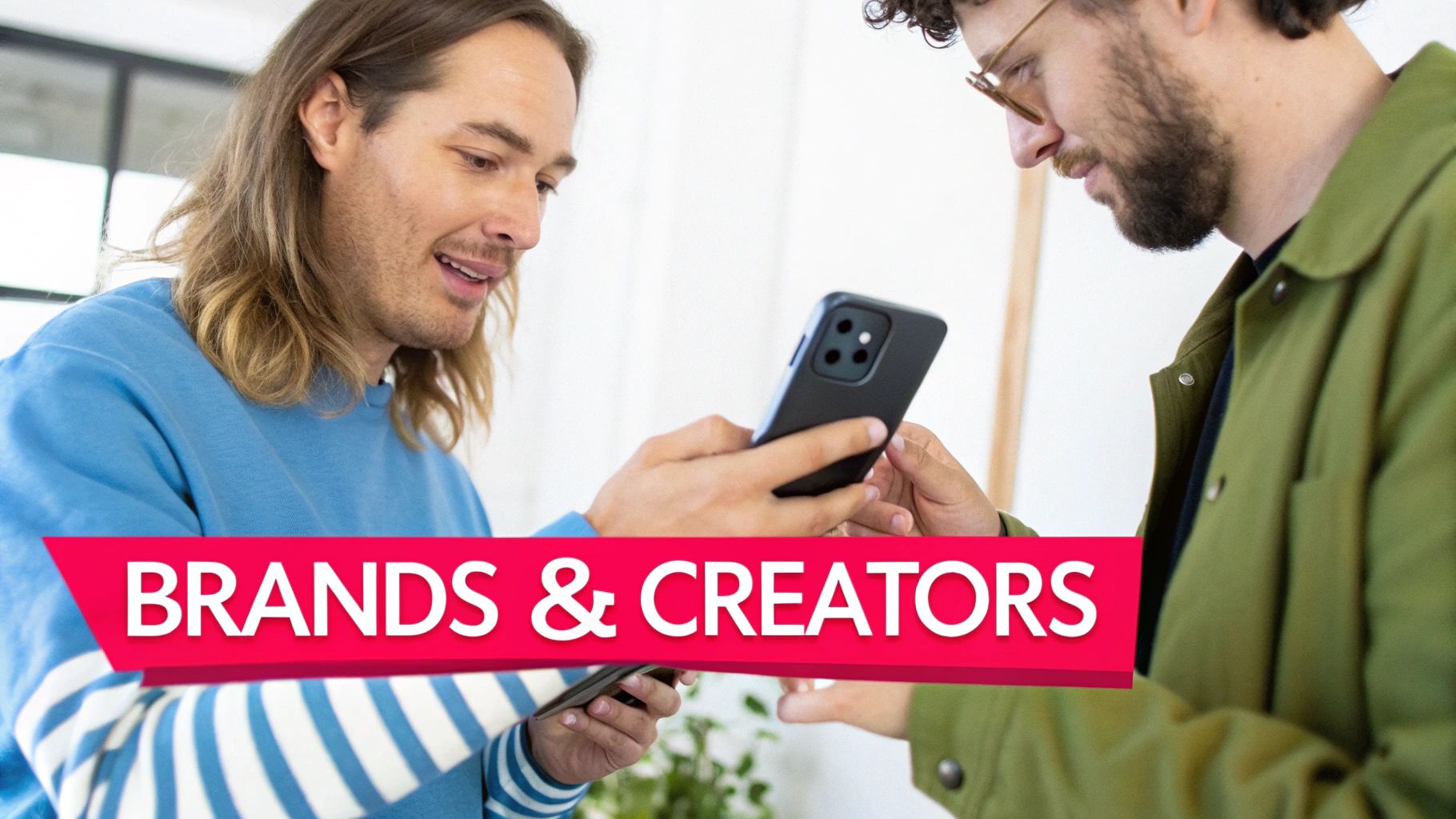
Let's dive into exactly how each side of the partnership comes out ahead.
Key Advantages for Brands
For brands, especially in the fast-paced world of e-commerce, plugging into a creator marketplace is a game-changer. It’s a direct line to the kind of authentic content that actually moves the needle.
Here are the biggest perks:
- Get Content at Scale, Fast: Need hundreds of user-generated content (UGC) videos for your next ad campaign? Doing that manually is a logistical nightmare. A marketplace flips the script. You post one campaign brief and get content back from dozens—or even hundreds—of creators at once. It's like having an on-demand content factory at your fingertips.
- Tap into Real Authenticity: Today’s customers can spot a slick corporate ad a mile away, and they’re tired of it. In fact, research shows that 70% of consumers look to creator opinions before making a purchase. Marketplaces connect you with real people who can produce genuine, relatable content that builds the kind of trust and social proof traditional ads just can't buy.
- Finally Prove Your ROI: One of marketing's oldest headaches is proving that your campaigns are actually working. Creator marketplaces solve this with built-in analytics dashboards. You can track everything—impressions, engagement, clicks, and even sales—right back to a specific creator. This gives you concrete data to justify your spending and fine-tune your next move.
Picture a new skincare brand that needs to build buzz quickly. Instead of spending months hunting for the right influencers, they can post a campaign on a platform like JoinBrands and have dozens of authentic video testimonials ready for their TikTok ads in just a few weeks. That’s the power we're talking about.
How Creators Get a Major Boost
It’s not just a one-way street. Creators gain a professional support system that takes the headache out of the freelance grind. The marketplace model provides the structure and security needed to focus on what they do best: creating.
This setup offers a few crucial advantages:
- A Steady Stream of Opportunities: No more cold pitching brands or endlessly scrolling for gigs. A marketplace brings the opportunities directly to you. Creators can browse campaigns that are a perfect match for their niche and audience, saving a ton of time and energy.
- Get Paid on Time, Every Time: Chasing down invoices is the bane of every freelancer's existence. Marketplaces eliminate this problem entirely with secure payment systems. Brands fund projects upfront, and the platform automatically releases the payment as soon as the work is approved. No more chasing.
- Crystal-Clear Expectations: Miscommunication can kill a great collaboration. On a marketplace, brands are required to provide detailed campaign briefs that spell out exactly what they need—deliverables, key messages, and the do's and don'ts. This clarity means creators can nail the content on the first try, leading to happier clients and long-term relationships.
For creators, a marketplace transforms the gig economy's uncertainty into a structured career path. It handles the administrative burdens, letting them focus on what they do best: creating compelling content.
To put it all into perspective, here’s a quick summary of how both sides benefit when they come together on a creator marketplace platform.
Benefits Breakdown for Marketplace Participants
| Benefit | For Brands | For Creators |
|---|---|---|
| Efficiency | Source hundreds of pieces of content from a single campaign brief, saving countless hours. | Find and apply for relevant brand deals in one centralized place, no more cold pitching. |
| Authenticity | Access genuine, user-generated content that builds trust and drives sales. | Partner with brands that align with their personal brand and audience values. |
| Financial Security | Get a clear ROI with integrated analytics that track performance from clicks to conversions. | Receive guaranteed and timely payments through a secure escrow system. |
| Clarity & Quality | Set clear expectations with detailed briefs, leading to higher-quality, on-brand content. | Work from structured briefs, eliminating guesswork and ensuring a smooth collaboration. |
Ultimately, a creator marketplace is more than just a tool. It’s the essential infrastructure for the future of marketing—one powered by real people. It’s where brands find the authentic voices they need to grow, and where creators find the opportunities they need to thrive.
How Marketplaces Power the Creator Economy
Creator marketplaces aren't just another shiny new tool for marketers. They are the very infrastructure powering one of the biggest economic shifts we've seen in a long time. The explosion of platforms like TikTok, Instagram, and YouTube didn't just mint new celebrities; it created a massive, global workforce of creative entrepreneurs. We call this the creator economy.
But this explosion of talent also created a huge logistical puzzle. On one side, you had millions of creators building passionate, engaged audiences. On the other, brands had no streamlined way to find them, let alone partner with them at scale. It was a messy, fragmented free-for-all.
Creator marketplaces stepped in to bring order to this exciting chaos. They act as the central nervous system, connecting millions of individual creators with the brands that desperately need their voices. Without this organizing layer, the creator economy would just be a bunch of disconnected freelancers, not the powerhouse industry it is today.
Structuring a Decentralized Workforce
Think of the creator economy as millions of tiny, independent businesses. Every creator is a CEO, creative director, and community manager rolled into one. A creator marketplace provides the framework that lets these micro-businesses plug into the larger global economy.
It essentially standardizes all the messy parts of collaboration, like:
- Discovery and Vetting: Creating a searchable, data-rich environment where brands can find verified talent in minutes, not months.
- Contracts and Agreements: Offering standardized terms that protect everyone, cutting out the endless legal back-and-forth.
- Project Management: Supplying the tools to manage deliverables, communication, and deadlines in a consistent, predictable way.
- Payments and Invoicing: Handling the money securely and reliably, which builds the trust needed for the whole ecosystem to work.
This structure is what gives brands the confidence to tap into a global pool of talent. It turns what was a high-risk, painfully manual process into a scalable and predictable marketing channel. And that efficiency is exactly what’s fueling the industry’s mind-blowing growth.
Fueling Exponential Economic Growth
The impact of this new infrastructure is staggering. The creator economy is no longer a niche market; it’s a full-blown global force. The market is projected to skyrocket from around USD 253.1 billion in 2025 to an incredible USD 2,055.3 billion by 2035. That's a compound annual growth rate of 23.3%. If you want to see the full picture, dive deeper into the creator economy market analysis.
This incredible growth is a direct result of the value that marketplaces unlock. By making creator partnerships accessible, measurable, and reliable, they empower brands of all sizes to invest in marketing that’s powered by real people.
A creator marketplace doesn't just facilitate transactions; it builds the economic rails that allow creative talent and brand capital to connect at an unprecedented scale, turning individual passion into a multi-billion dollar industry.
Ultimately, to really understand what is a creator marketplace, you have to see it as more than just a piece of software. It’s the foundational platform that organizes, professionalizes, and scales the entire creator economy. It’s not just a new way to market; it's the operating system for a new way of working.
Choosing the Right Creator Marketplace for Your Brand
Jumping into a creator marketplace is an exciting step, but let's be real—with so many options out there, picking the right one can feel like a chore. The secret is to look past the flashy homepages and dig into the stuff that will actually move the needle for your brand. Nail this choice upfront, and you'll save yourself a ton of time, money, and future headaches.
Think of it like choosing the right toolkit for a job. Sure, a generic wrench set might work, but a specialized kit designed for what you're doing makes the whole process faster, easier, and delivers a much better result. The right creator marketplace is no different; it should feel like it was built just for your brand's niche, budget, and goals.
Evaluate the Creator Pool
First thing's first: the talent. A platform is only as good as the creators who use it. You need to poke around and see if the diversity and quality of the creators actually line up with your brand's voice and the audience you're trying to reach.
Look for a platform that has a healthy mix of creators, including:
- Micro-Influencers (1K-100K followers): These are your secret weapons for authentic user-generated content (UGC). Their audiences are typically super-engaged and laser-focused on a specific niche.
- Macro-Influencers (100K-1M followers): When you need to get a lot of eyes on your product quickly, these creators are perfect for broad awareness campaigns.
- UGC Specialists: Don't forget about the creators who aren't necessarily "influencers." Many are pros at cranking out high-quality, authentic content that brands can repurpose for social ads, websites, or email campaigns.
For instance, a platform like JoinBrands gives you direct access to a huge, varied network. This means you can find the exact type of creator you need, whether it's a TikTok Shop affiliate to drive sales or a UGC producer for your next round of ads.
A quick glance shows that the platform is built to be an all-in-one spot for sourcing all kinds of creative talent, from traditional influencers to dedicated UGC specialists.
Assess the Platform's Tools and Features
Beyond the creators, the platform’s tech is what will make or break your experience. Powerful search and filtering tools are an absolute must. Can you easily hunt for creators by niche, audience demographics, location, engagement rate, or even specific keywords? The more granular you can get, the faster you'll find your perfect match.
A great creator marketplace doesn't just give you a list of names; it provides the sophisticated search tools needed to pinpoint the ideal creator with precision and speed, turning a week-long task into a ten-minute search.
Next, look at the campaign management workflow. Does the platform have everything you need in one place, like built-in messaging, content approval systems, and automated payments? These features are what allow you to run campaigns at scale without getting totally swamped by admin work. If you're weighing your options, our guide on the 10 best influencer marketing platforms is a great place to see how different tools stack up.
Finally, check out the pricing model. Some platforms run on a monthly subscription, while others take a cut from each collaboration. You need to find a model that makes sense for your budget and how often you plan on launching campaigns. Throw in transparent pricing and solid customer support, and you've found a winner.
A Playbook for Success on Creator Marketplaces
Signing up for a creator marketplace is the easy part. Actually winning on the platform? That takes a real game plan. To stand out, you need to think beyond just posting a job. It’s all about creating a partnership experience that the best creators are excited to be a part of—one that delivers killer results for your brand. This playbook is packed with actionable advice to help you get the most out of every collaboration.
The absolute foundation of any successful campaign is a compelling and crystal-clear brief. Don’t think of your brief as a list of demands, but as an invitation. It needs to inspire creators while setting unambiguous expectations right from the get-go. A vague brief leads to off-brand content, but a great one attracts the right partners and ensures you get exactly what you need.

Crafting the Perfect Campaign Brief
Your brief is your single most important tool. To make it truly effective, you need to include a few key components that leave zero room for guesswork. Getting this right from the start prevents those classic misunderstandings and cuts down on time-sucking revisions later.
A high-impact brief should always include:
- A Clear Campaign Goal: Are you trying to boost brand awareness, drive direct sales, or just stock up on authentic user-generated content (UGC) for your ad library? Spell it out.
- Specific Content Deliverables: Define exactly what you need. For example, "Two 15-second TikTok videos and three high-resolution photos."
- Key Talking Points (Not a Script): Give them the essential messages about your product, but please, avoid restrictive scripts. That’s how you kill creativity.
- Visual Guidelines and Brand Voice: Share your brand’s look and feel, your tone, and any crucial do’s and don’ts to keep the content consistent.
- Clear Deadlines and Call-to-Actions: Lay out the timeline for drafts and final posts, along with any specific links or discount codes you want them to include.
Nurturing Long-Term Creator Relationships
The brands that truly crush it on creator marketplaces don't see collaborations as one-off transactions. They see them as the beginning of a long-term relationship. Turning a single project into a lasting brand ambassadorship is how you build powerful, ongoing advocacy for your brand. This approach creates genuine affinity and just plain gets better results over time.
So, how do you foster these valuable partnerships? Focus on creating a positive experience. Pay creators promptly using the platform’s secure system, give them constructive and respectful feedback, and actually engage with their content when it goes live. These small gestures show you value their work beyond just a single post. You can find more tips on building these connections by exploring how to collaborate with influencers effectively.
The ultimate goal on a creator marketplace is to move from transactional campaigns to transformational partnerships. Invest in relationships, and you'll build an army of authentic brand advocates.
This long-term mindset benefits creators, too. For those on the other side of the brief looking to level up their game, resources like a Creator MBA program can offer a structured path to growing professionally and finding more success.
Maximizing Your Content’s Value
Finally, don't let that amazing content you paid for just sit on a creator’s social feed. The real magic happens when you repurpose those assets across all of your marketing channels. A single piece of creator content can be a workhorse for your brand—powering social ads, website testimonials, email campaigns, and so much more. Just make sure your agreement grants you the rights to repurpose the content. This strategy dramatically lowers your creative costs and stretches the ROI of every single campaign you run.
Got Questions About Creator Marketplaces? We’ve Got Answers.
When brands start digging into what a creator marketplace is and how it might fit into their strategy, a few practical questions almost always pop up. Getting these sorted out is key to moving forward with confidence. From budgeting to measuring results, let’s tackle the most common things brands want to know.
How Much Does It Cost to Use a Creator Marketplace?
This is usually the first question, and the honest answer is: it depends. There’s no single price tag, as platforms are built differently to suit different needs. Think of it like choosing a phone plan—you pick the one that matches how you'll use it.
Here are the most common ways they’re priced:
- Subscription Models: You pay a flat monthly or annual fee. This gives you constant access to the platform's creator database and management tools. It’s a great fit for brands that plan to run campaigns consistently.
- Commission-Based Fees: Instead of a flat fee, the marketplace takes a small cut of each payment you make to a creator. This pay-as-you-go approach is perfect if you’re just dipping your toes in the water with a one-off campaign.
- Hybrid Approaches: Some platforms mix it up, charging a smaller subscription fee plus a commission. This often gives you the best of both worlds—access when you need it without the full commitment.
Remember, this is just the platform fee. You also need to budget for the creators themselves. Their rates will vary based on things like audience size, engagement, and how much work you’re asking them to do.
What's the Difference Between an Agency and a Marketplace?
This is another common point of confusion. Both connect you with creators, but they operate in completely different ways. It really comes down to how involved you want to be.
An influencer agency is your full-service, hands-on partner. They do everything for you—from dreaming up the campaign strategy and hand-picking the creators to managing all the back-and-forth and delivering the final report. It's a "done-for-you" service, and that convenience comes with a premium price tag.
On the other hand, a creator marketplace is a powerful "do-it-yourself" platform. It gives your team the technology and access to find, manage, and pay creators directly. This gives you way more control and is typically much more cost-effective.
So, which one is right for you? If you have a marketing team that’s ready to run the show, a marketplace is almost always the more efficient and scalable choice.
How Do I Actually Measure Campaign ROI?
Measuring your return on investment (ROI) is everything, and a good marketplace makes this simple. The secret is to define your goals before you even think about launching a campaign. Most platforms have built-in analytics dashboards that make tracking your key performance indicators (KPIs) a breeze.
If your goal is brand awareness, you’ll be watching metrics like impressions, reach, and engagement rates (all those likes, comments, and shares).
If your goal is more conversion-focused, you’ll lean on trackable assets like unique discount codes or custom affiliate links. These let you see exactly how many clicks, leads, and—most importantly—sales each creator is driving. This data shows you who your top performers are, letting you calculate a clear ROI and fine-tune your future campaigns for even better results.
Ready to stop searching and start creating? JoinBrands gives you direct access to over 250,000 vetted creators, making it simple to find the perfect partners and launch high-impact campaigns at scale. Find your next creator on JoinBrands.
